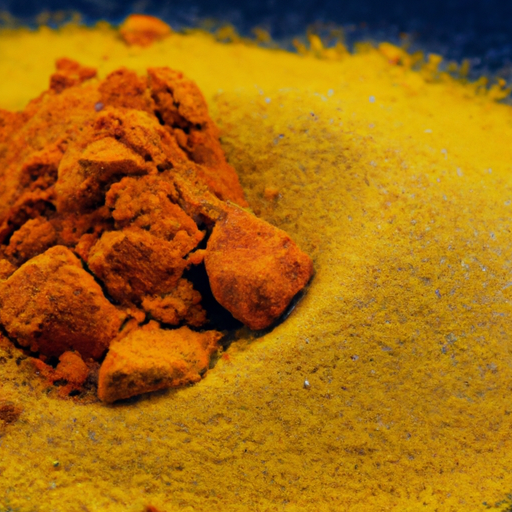As a person who has suffered from the excruciating agony of a toothache, I understand just how debilitating it can be. The pulsating pain can make it hard to focus on anything else and can even disrupt your sleep.
While seeing a dentist is always the best course of action for toothaches, natural remedies like turmeric tea have gained popularity for their supposed pain-relieving properties. But does turmeric tea actually work for toothaches?
In this article, I’ll dive into the science behind toothaches and natural remedies, as well as the properties of turmeric and how it may help with toothaches. I’ll also explore other natural remedies that can be used for toothaches and when it’s necessary to see a dentist.
So, if you’re wondering whether turmeric tea is a viable option for toothache relief, read on to find out.
Key Takeaways
- Turmeric tea has anti-inflammatory and antioxidant properties due to its active ingredient, curcumin, which can help alleviate toothache pain and promote overall oral health.
- Natural remedies like turmeric tea, clove oil, garlic, and saltwater rinses have gained popularity for their pain-relieving properties but may not always be effective in treating certain conditions.
- Tooth decay prevention is key to avoiding toothaches, which can be achieved through regular brushing and flossing, avoiding sugary foods and drinks, and maintaining regular dental check-ups.
- Turmeric tea can provide natural relief for toothaches, but it should not replace professional medical advice and treatment. A safe dosage is 1-2 teaspoons of turmeric powder per cup of water, and excessive consumption may cause side effects such as stomach upset, nausea, and diarrhea.
What Causes Toothaches?
Do you know what causes toothaches? Toothaches can be caused by a variety of factors, including tooth decay, gum disease, and tooth fractures. Poor dental hygiene can also contribute to toothaches, as it allows bacteria to thrive and cause infections.
Additionally, dental procedures such as fillings, root canals, and extractions can cause temporary tooth sensitivity or pain. Tooth decay prevention is key to avoiding toothaches. This can be achieved through regular brushing and flossing, as well as avoiding sugary foods and drinks.
Maintaining regular dental check-ups is also important, as dentists can identify and treat early signs of tooth decay before they become more serious. While there are many common causes of dental pain, taking preventative measures can help reduce the likelihood of experiencing toothaches.
Natural remedies can also provide benefits in helping alleviate toothache pain.
The Benefits of Natural Remedies
Using natural remedies can be a great way to improve overall health and wellness, but what are the potential drawbacks to relying solely on these methods? Herbal remedies have been used for centuries to alleviate various health issues, including toothaches. However, it is important to note that natural remedies should not replace professional medical advice and treatment.
While natural remedies may offer benefits such as fewer side effects and a holistic approach to health, they may not always be effective in treating certain conditions. In addition, some herbal remedies may interact with medications or cause allergic reactions. It is important to do thorough research and consult with a healthcare professional before using any natural remedy for toothaches or any other health issue.
| Pros | Cons |
|---|---|
| Fewer Side Effects | May not be effective for all conditions |
| Holistic Approach | May interact with medications |
| Can be affordable | May cause allergic reactions |
| May have additional health benefits | May not be regulated or standardized |
| Can be used in conjunction with traditional medicine | Dosage may not be accurate |
Moving on to the next section, let’s explore what turmeric is and how it can potentially alleviate toothache pain.
What is Turmeric?
You may have seen this vibrant yellow spice used in curries and other dishes, but did you know that it also has potential health benefits for tooth pain relief?
Turmeric, scientifically known as Curcuma longa, is a flowering plant that belongs to the ginger family. It is native to India and Southeast Asia, where it has been cultivated for thousands of years.
Turmeric has been used in traditional medicine for various purposes, including inflammation, pain relief, and wound healing. Turmeric cultivation is an important industry in India, where it is commonly used as a spice and medicinal herb.
The active ingredient in turmeric is called curcumin, which is responsible for its yellow color and potential health benefits. Aside from its traditional uses, turmeric has also gained popularity in recent years as a natural remedy for various health conditions, including toothaches.
But how does turmeric work to relieve tooth pain? Let’s explore the science behind turmeric’s medicinal properties in the next section.
The Science Behind Turmeric’s Medicinal Properties
I’m excited to dive into the science behind turmeric’s medicinal properties. One of the key points to explore is its anti-inflammatory properties, which have been shown to help with a range of health conditions.
Additionally, turmeric is a powerful antioxidant, which can help protect against damage from free radicals in the body.
Finally, we’ll look at the role of curcumin, the active compound in turmeric, in pain management.
Anti-Inflammatory Properties
Turmeric tea contains compounds that can help reduce inflammation, making it a potential natural remedy for toothaches. Inflammation is a common cause of toothaches, and turmeric has been shown to have anti-inflammatory properties that can help alleviate pain and discomfort. While turmeric supplements are also available, drinking turmeric tea may be a more enjoyable and convenient way to experience its benefits.
In addition to its anti-inflammatory properties, turmeric is also known for its antioxidant properties. Antioxidants help protect cells from damage caused by free radicals, which can contribute to various health problems, including dental issues. Incorporating turmeric tea into your daily routine may not only help alleviate toothache pain but also promote overall oral health.
Antioxidant Properties
As I mentioned earlier, turmeric tea has potent anti-inflammatory properties. However, it also boasts antioxidant benefits that make it a viable option for toothache relief.
Antioxidants are crucial for maintaining our overall health as they protect our bodies’ cells from damage caused by free radicals. Free radicals are unstable molecules that can cause oxidative stress, leading to chronic illnesses and diseases.
Turmeric tea contains compounds called curcuminoids, which are potent antioxidants. These compounds can help reduce inflammation and provide pain relief, making turmeric tea an effective remedy for toothaches.
By consuming turmeric tea regularly, you may be able to reduce inflammation in your body, leading to fewer instances of toothache pain. This is due to the fact that inflammation is often the root cause of toothache pain.
Therefore, the antioxidant benefits of turmeric tea make it an excellent choice for those looking for a natural and effective way to manage toothache pain. With the knowledge that turmeric tea has both anti-inflammatory and antioxidant properties, we can begin to explore its potential for pain management.
Curcumin, the primary active ingredient in turmeric, has been extensively researched for its pain-relieving properties. Let’s dig deeper into how curcumin can help manage pain in the next section.
Curcumin and Pain Management
Unlocking the pain-relieving potential of curcumin is like discovering a hidden treasure trove for those seeking natural pain management solutions. Curcumin, the active ingredient in turmeric, has been shown to have anti-inflammatory effects that can help alleviate pain. In fact, curcumin has been found to be as effective as some pain medications without the negative side effects.
To understand how curcumin can help with pain management, let’s take a look at the following table:
| Curcumin Supplements | Turmeric Recipes |
|---|---|
| Capsules or tablets | Turmeric tea |
| Tinctures | Golden milk |
| Powders | Turmeric smoothies |
While curcumin supplements are a popular choice for those seeking pain relief, incorporating turmeric into your diet through recipes can also be an effective way to experience the benefits of curcumin. Turmeric tea, for example, can be made by steeping fresh or ground turmeric in hot water and adding honey or lemon for taste. This simple yet powerful drink can be a natural and effective way to manage pain.
Turmeric tea is just one way to experience the benefits of curcumin for pain management. In the following section, we will explore how turmeric tea specifically can help with toothaches.
How Turmeric Tea Can Help with Toothaches
If you’re dealing with a toothache, sipping on a warm cup of turmeric tea might just provide some relief. Turmeric has anti-inflammatory properties that can help reduce swelling and pain. It also contains curcumin, which has been shown to have similar effects to over-the-counter pain medications.
Turmeric tea is one of many home remedies for toothache relief. To make it, simply boil water and add a teaspoon of turmeric powder. You can also add other ingredients such as honey and ginger for added flavor and health benefits.
Give it a try next time you’re dealing with tooth pain and see if it helps provide some relief.
How to Make Turmeric Tea
I’ll talk about how to make turmeric tea. To make this tea, you’ll need a few key ingredients like turmeric, water, and honey.
The preparation involves boiling the ingredients together and letting it steep for a few minutes. As for dosage, it’s recommended to drink turmeric tea in moderation and consult with a healthcare professional if you have any concerns.
Ingredients
Turmeric tea is made with simple ingredients like turmeric, ginger, and cinnamon, which can provide natural relief for toothaches. Turmeric is known for its anti-inflammatory properties, which can help reduce swelling and pain in the gums. Ginger and cinnamon also have anti-inflammatory properties and can help relieve pain and inflammation in the mouth. Additionally, cinnamon has been found to have antibacterial properties, which can help fight off oral infections.
Aside from its health benefits, turmeric tea also has a unique and delicious flavor profile. The turmeric adds a warm and earthy flavor, while the ginger and cinnamon provide a spicy and slightly sweet taste. This combination of flavors makes for a comforting and soothing drink, which can help alleviate toothache pain.
To prepare turmeric tea, there are a few simple steps that you can follow.
Preparation
To prepare this soothing drink, start by simmering the ingredients in a pot of water until the aroma fills your kitchen and the spices have infused the liquid. The tea brewing process is crucial in order to extract the maximum amount of curcumin, the active compound in turmeric that possesses anti-inflammatory and antioxidant properties.
Once the water has come to a boil, reduce the heat and let the mixture simmer for about 10-15 minutes.
Next, strain the liquid into a cup and add honey or other natural sweeteners to taste. Turmeric tea is a simple and natural remedy that can help alleviate toothache by reducing inflammation and pain.
In addition to its therapeutic effects, this drink also provides a range of health benefits, such as boosting immunity, improving digestion, and reducing the risk of chronic diseases. Moving on to the dosage, it is important to note that excessive consumption of turmeric may cause side effects, so it’s recommended to consume this drink in moderation.
Dosage
Are you wondering how much of this powerful spice you should be consuming? Let’s take a closer look at the recommended dosage for turmeric tea. Generally, a safe dosage for turmeric tea is 1-2 teaspoons of turmeric powder per cup of water. You can adjust the amount of turmeric based on your personal preference or the severity of your toothache.
It’s important to note that consuming too much turmeric can result in potential side effects such as stomach upset, nausea, and diarrhea. If you experience any of these symptoms, it’s best to decrease your dosage or stop consuming turmeric tea altogether.
As with any natural remedy, it’s always best to consult with a healthcare professional before incorporating it into your daily routine.
Other natural remedies for toothaches include clove oil, garlic, and saltwater rinses. Let’s explore these options in the next section.
Other Natural Remedies for Toothaches
There’s no denying that natural remedies like clove oil and peppermint tea can be effective for relieving toothaches. However, there are other natural remedies that can provide some relief as well.
Here are some other home remedies that you can try:
- Saltwater rinse: Mix 1/2 teaspoon of salt in a cup of warm water and swish it around your mouth for about 30 seconds before spitting it out. This can help reduce inflammation and kill bacteria in the affected area.
- Garlic: Crush a garlic clove and mix it with a pinch of salt. Apply the mixture directly to the affected tooth and leave it on for a few minutes before rinsing your mouth with warm water. Garlic has antimicrobial properties that can help fight infection.
- Turmeric: Mix 1/2 teaspoon of turmeric powder with a bit of water to form a paste. Apply the paste directly to the affected tooth and leave it on for a few minutes before rinsing your mouth with warm water. Turmeric has anti-inflammatory and antimicrobial properties that can help reduce pain and fight infection.
While these natural remedies can provide temporary relief, it’s important to note that they aren’t a substitute for professional dental care. If your toothache persists for more than a few days or is accompanied by other symptoms like fever or swelling, it’s important to see a dentist as soon as possible.
When to See a Dentist
Before we discuss when to see a dentist for a toothache, let’s quickly recap some other natural remedies for toothaches. Clove oil, garlic, and salt water rinses are all effective ways to alleviate tooth pain temporarily. However, it’s important to remember that these remedies only provide temporary relief and shouldn’t be used as a substitute for professional dental care.
When to seek dental care for a toothache ultimately depends on the severity and duration of the pain. If the pain’s severe, lasts more than a couple of days, or is accompanied by other symptoms such as fever or swelling, it’s important to see a dentist as soon as possible. These could be signs of a dental emergency, which requires immediate treatment to prevent further damage or infection.
Remember, dental problems only get worse with time, so it’s better to address them sooner rather than later.
Moving forward, let’s talk about how to prevent toothaches in the first place.
How to Prevent Toothaches
Feeling lazy about dental hygiene? Don’t blame me when your teeth start aching. Here’s how to prevent those pesky toothaches.
Preventing cavities is the key to avoiding toothaches. Brushing your teeth twice a day is a must, but it’s not enough. You also need to floss daily to remove food particles stuck between your teeth that brushing can’t reach. Mouthwash can also help kill bacteria and freshen your breath, but it’s not a substitute for brushing and flossing.
In addition to proper oral hygiene, you should also watch what you eat and drink. Sugary and acidic foods and drinks can erode your tooth enamel and cause cavities. Limit your intake of sugary treats, carbonated drinks, and fruit juices. If you do indulge, rinse your mouth with water afterward and brush your teeth after 30 minutes to an hour.
By following these oral hygiene tips and watching what you eat and drink, you can prevent toothaches and keep your teeth healthy.
As you can see, there are many ways to prevent toothaches and maintain good oral health. However, sometimes even the best preventative measures can’t stop a toothache from occurring. In the next section, I’ll discuss some final thoughts and recommendations on how to manage toothaches when they do happen.
Final Thoughts and Recommendations
Now that we’ve discussed how to prevent toothaches, let’s talk about toothache relief. As someone who’s dealt with toothaches before, I know just how painful and uncomfortable they can be. While there are various over-the-counter pain relievers that can help, some people prefer more holistic approaches. This is where turmeric tea comes in.
Turmeric has been used in traditional medicine for centuries and is known for its anti-inflammatory properties. Some studies have shown that it can help alleviate tooth pain and reduce inflammation. While more research is needed to fully understand its effects, many people swear by turmeric tea for toothache relief.
Here are three reasons why you might want to give it a try:
-
Holistic wellness: Turmeric is a natural remedy that has been used for centuries. If you prefer to use natural remedies instead of relying on medication, turmeric tea might be a good option for you.
-
Anti-inflammatory properties: Inflammation is one of the main causes of tooth pain. Turmeric has been shown to have anti-inflammatory properties, which can help reduce pain and inflammation in the affected area.
-
Easy to make: Making turmeric tea is relatively easy and requires only a few ingredients. Plus, you can customize it to your liking by adding honey or other natural sweeteners.
Frequently Asked Questions
Are there any side effects of consuming turmeric tea for toothache relief?
I have found that turmeric tea benefits include reducing inflammation and pain. However, it is important to note that excessive consumption of turmeric tea may lead to stomach upset. It is recommended to limit turmeric tea dosage to 1-2 cups per day.
Can turmeric tea be used as a substitute for traditional toothache medications?
I investigated whether turmeric tea can substitute traditional toothache medications. Turmeric tea is a natural pain relief toothache remedy, but it is not a substitute for prescribed medications.
How often should turmeric tea be consumed for effective toothache relief?
I suggest drinking turmeric tea twice daily for the best chance at effective toothache relief. The ideal times to consume it are after meals. Studies show that turmeric’s anti-inflammatory properties can alleviate pain and swelling.
Is turmeric tea suitable for people with dental fillings or other dental restorations?
As someone with dental restorations, I have found that consuming turmeric tea in moderation did not cause any negative effects. However, it is important to consult with a dentist and not rely solely on natural remedies for toothache relief.
Are there any precautions that should be taken while using turmeric tea for toothache relief?
Before using turmeric tea for toothache, it’s important to take precautionary measures such as consulting a dentist and checking for allergies. Dosage frequency should also be monitored. Following these steps can lead to safe and effective relief.
Conclusion
Overall, I’ve found that turmeric tea can be a helpful natural remedy for toothaches. Its anti-inflammatory properties can help reduce pain and swelling in the affected area. However, it’s important to note that turmeric tea shouldn’t replace professional dental care.
It’s still important to see a dentist if the toothache persists or if there are other symptoms such as fever or difficulty swallowing. In conclusion, using natural remedies like turmeric tea can be a great addition to your dental care routine.
Think of it like adding a cozy blanket to a chilly night. It can provide some relief and comfort, but it’s not a substitute for professional care. Remember to prioritize your dental health by practicing good oral hygiene, eating a balanced diet, and scheduling regular dental check-ups.
By taking these steps, you can help prevent toothaches and maintain a healthy smile.










